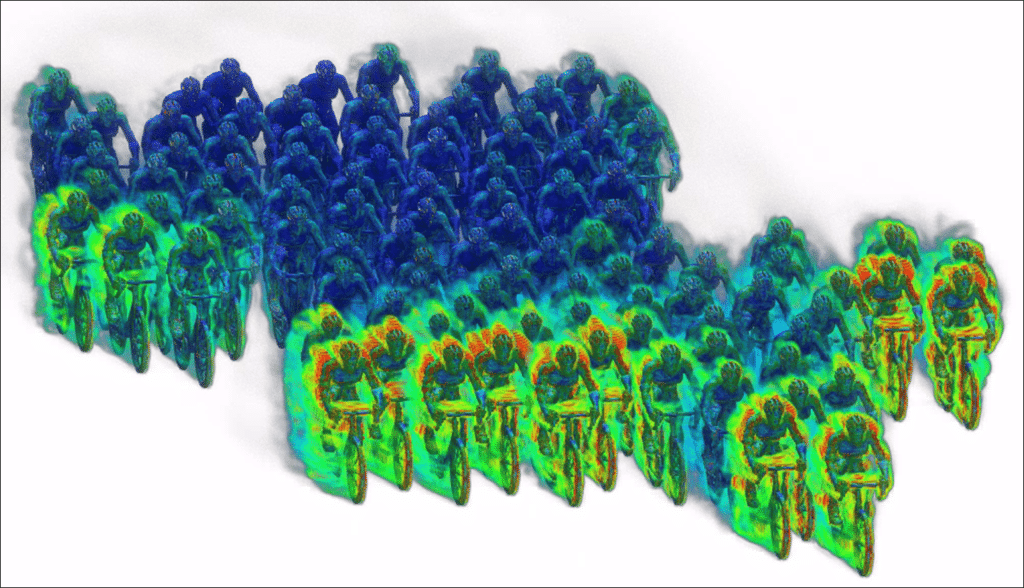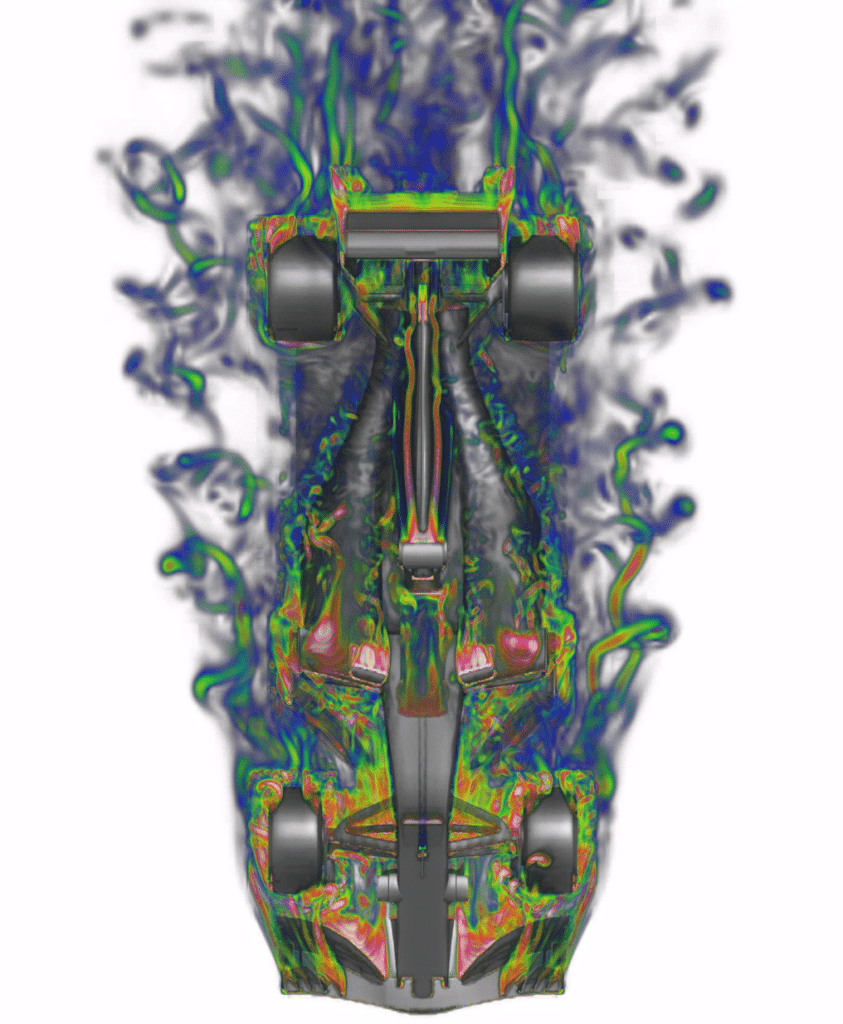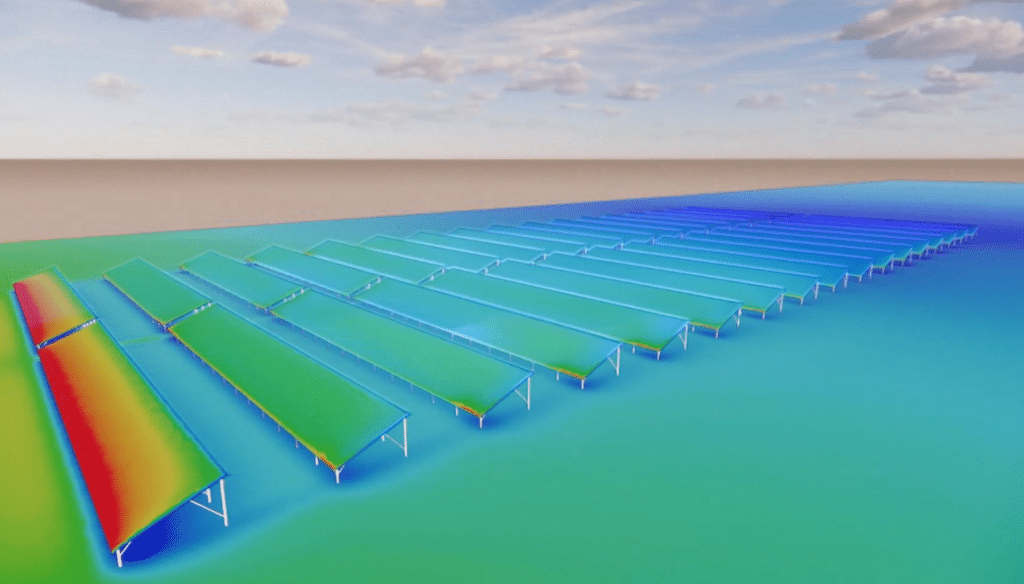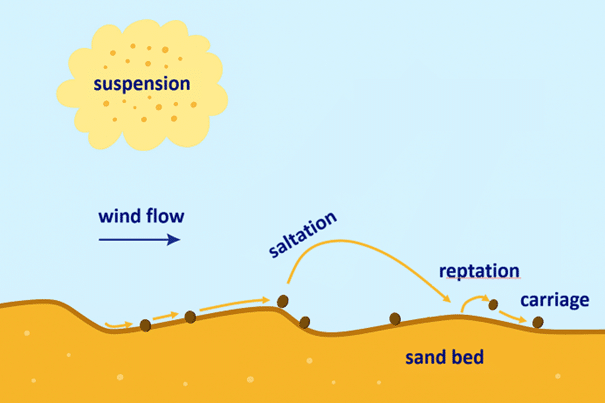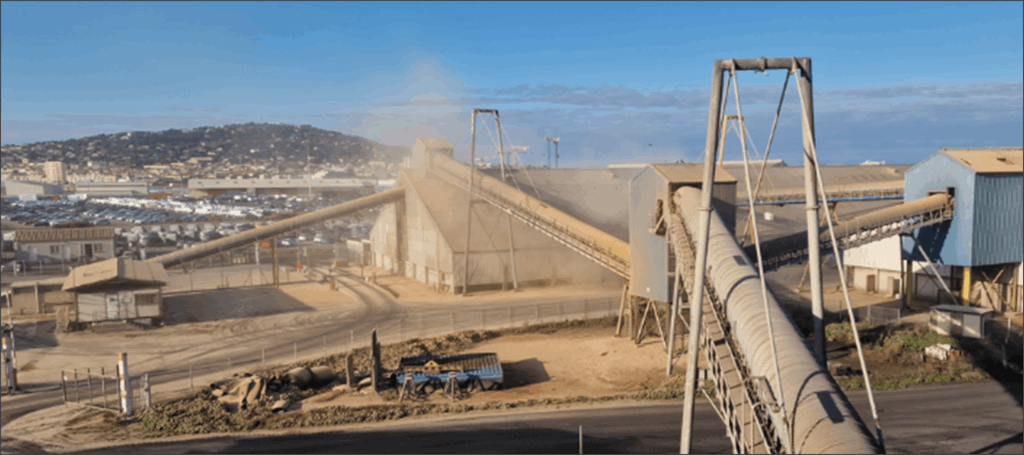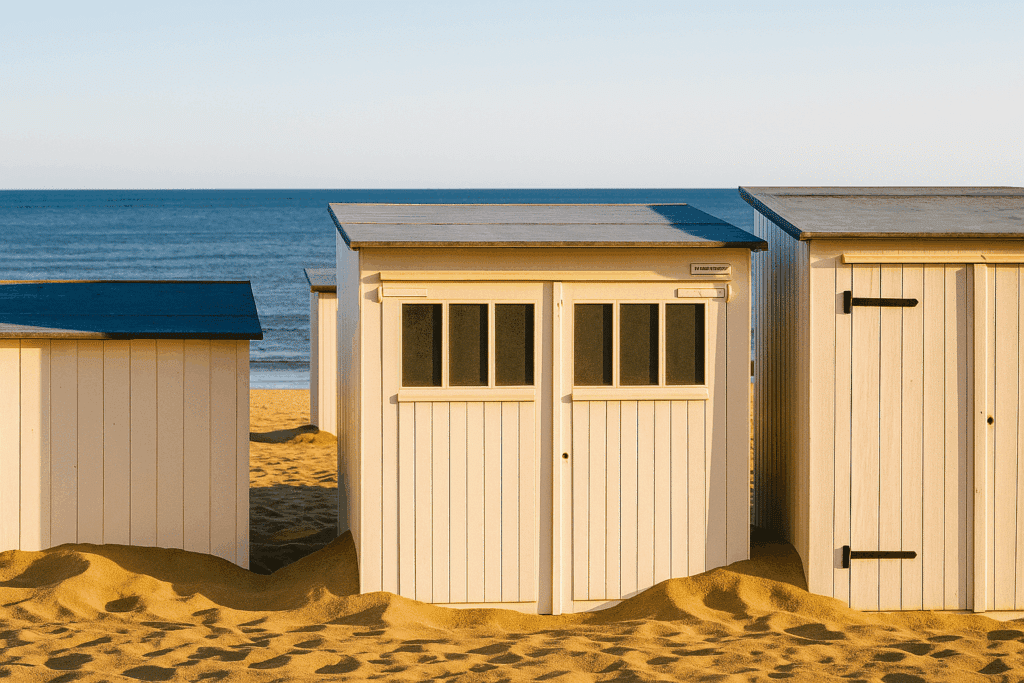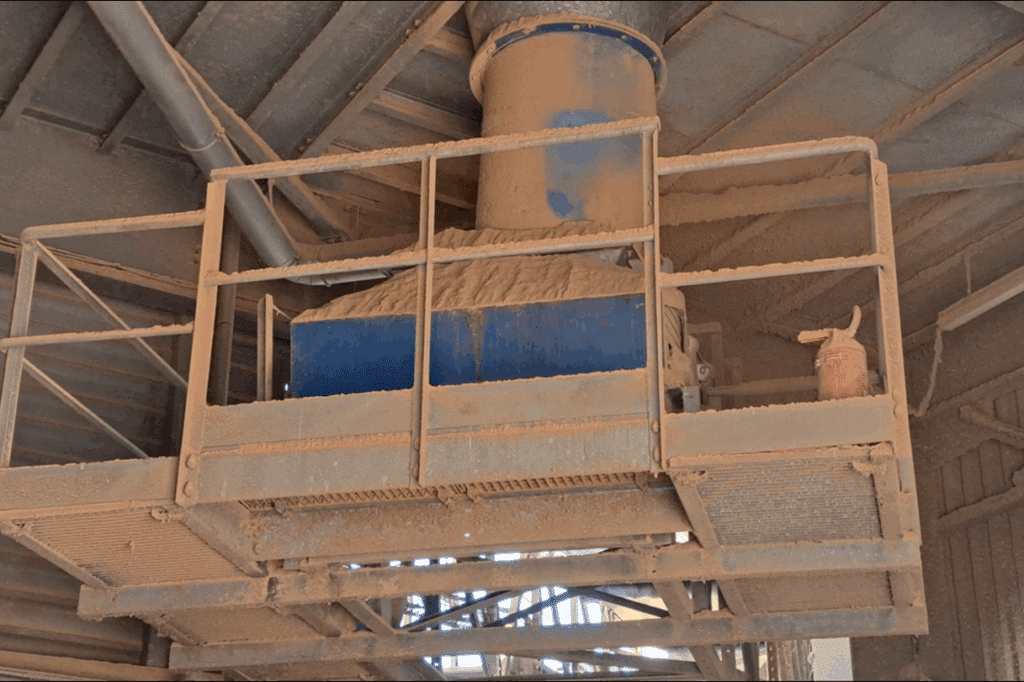CFD modeling of sand and dust movement
Home » Air & Wind » CFD modeling of sand and dust movement
CFD to simulate sand and dust movement
Against a backdrop of climate change,increasing urbanization and pressure on natural environments, controlling the phenomena associated with wind transport of particles – sand, dust, powdery materials – is becoming a major challenge for the sustainability of projects. At EOLIOS, our expertise in Computational Fluid Dynamics (CFD) enables us to accurately model the movement of these particles under the effect of the wind, anticipate their impact and design solutions adapted to each environment.
- Analysis of wind erosion on sandy soils
- Modeling fine dust transport in urban and industrial environments
- Evaluating the effectiveness of natural or artificial windbreaks
- Study of the impact of development on sand flows in coastal areas
- CFD simulation of particle transport in a construction zone
- Optimization of dust containment systems
- Design assistance for fences and temporary protection systems
- Assessing the effects of urban planning on dust dispersion
- Recommendations for the sustainable management of dunes and sensitive environments
We support project owners, urban planners, industrial operators and developers in their projects requiring particulate flows to be taken into account: sand erosion and deposition, dust management in construction zones, preservation of dunes or limiting emissions around sensitive sites. Thanks to an approach that combines on-site measurements and digital simulation, we can offer concrete solutions to make facilities safer, preserve ecosystems and improve quality of life.
CFD expertise for particle displacement modeling
Understanding particle dynamics to secure and optimize projects
The movement of sand and dust is a natural phenomenon influenced by weather conditions, site morphology and human activities. In coastal, desert or industrial areas, these movements can compromise the stability of structures, generate health hazards or alter the landscape. EOLIOS mobilizes its skills in fluid mechanics and numerical modeling to analyze these phenomena in detail, anticipate their effects, and propose appropriate development solutions.
Complex mechanisms linked to wind-soil interaction
Wind erosion is the result of multiple processes: particle uplift, saltation or suspension transport, and deposition.
These phenomena vary according to particle size,soil moisture, plant cover, surface obstacles and, above all, windintensity and direction. EOLIOS studies all these parameters using a combination of field measurements and CFD modeling, in order to accurately represent the behavior of particles in natural or urban environments.
Our engineers assess the risks of deposition on sensitive structures (roads, rails, technical buildings), potential erosion zones (embankments, beaches, dunes), or dust plumes fromindustrial activities or earthworks.
Analyzing sand displacement: a measurement and simulation approach
On-site measurements: identify sources and quantify particulate flows
The first steps in a diagnosis are to characterize the actual environmental conditions: wind speed and direction, humidity, ground roughness, physical obstacles, and so on. EOLIOS deploys meteorological sensors, anemometers, dust beacons (PM10, PM2.5) and mobile sand collection devices to quantify wind flows.
These data make it possible to identify emission source zones (bare areas, construction sites, mobile dunes) and preferential transport corridors. On-site measurement is also an essential basis for calibrating numerical models.
CFD modeling: visualize trajectories, accumulations and sensitive areas
CFD simulations enable us to reproduce the interactions betweenairflow and the solid particles being transported. Depending on the needs of the project, EOLIOS mobilizes adapted models to simulate the different grain sizes, their deposition speed, and their behavior in the presence ofobstacles orrelief asperities.
These models integrate the effects of turbulence, ground speed gradients, roughness and thetemporal evolution of the wind. They enable precise mapping of erosion zones, transport corridors, deposits at the foot of structures, and impacts on vegetation.
Example of dust dispersion from a factory
Applications and use cases: from coastline to industrial sites
Building protection and landfill risk management
In coastal or desert areas, sand flows can jeopardize the stability of infrastructure (fences, roads, railroads, technical buildings). Our studies enable us to determine the expected accumulation heights, the areas of least mixing conducive to deposition, and to assess the durability of existing protection (windbreaks, embankments, palisades).
Specific simulations can be carried out to optimize the placement of screens, vegetation or erosion control materials. These tools are also invaluable for anticipating theprogressive burial of structures or the maintenance needs of technical sites (solar panels, sensors, railroads, etc.).
Industrial dust: limiting health and environmental impact
On the careers storage or processing of powdered materials, the dust emissions can generate health risks for workers, nuisance to local residents and damaging deposits on installations. EOLIOS intervenes to analyze the dust dispersion in conditions (strong wind, moving machinery, extraction) and suggest corrective actions: change ofstorage orientation, misting, vegetation, air barriers.
Simulation results are interpreted in relation to local air quality standards and regulatory requirements, taking into account the sensitivity of the site (proximity to homes, schools, protected areas, etc.).
Comprehensive support for controlling particulate phenomena
Combining real data, modeling and business expertise
TheEOLIOS approach is based on the integration of all aspects of the phenomenon: knowledge of the terrain, state-of-the-art instrumentation, advanced numerical analysis and interpretation by specialized engineers. This combination provides reliable, operational diagnostics that can be used directly to design oroptimize projects.
Our deliverables include dynamic particle flow maps, 3D visualizations of at-risk areas, erosion or deposition indicators and technical recommendations (installation of screens, revegetation, modification of topographical profiles, etc.).
Whether your project involves coastal infrastructure, an open-air construction site, a sensitive site exposed to the wind, or an industrial zone subject to dust emissions, EOLIOS experts can work with you to secure, preserve and optimize the environment.
Need expert advice on sand or dust displacement?
Contact us to discuss your problem:
Find out more:

